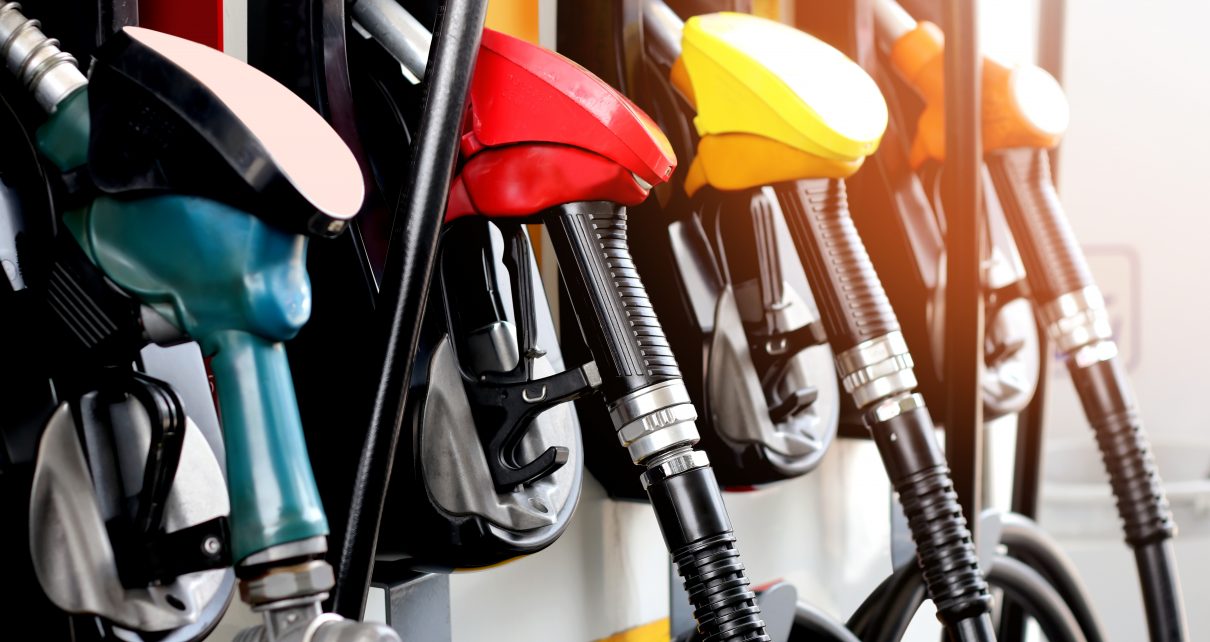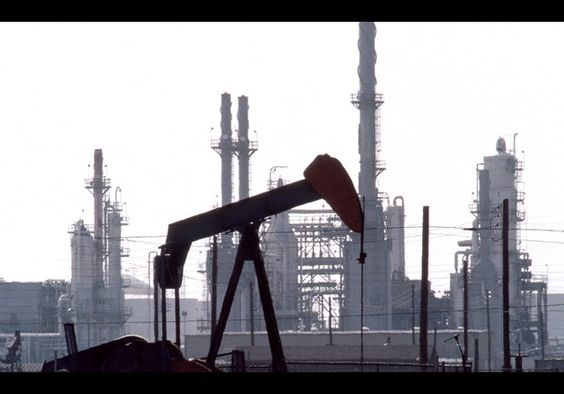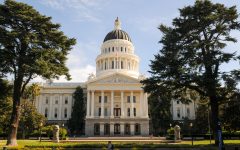
Gasoline Pump (Photo: ThePowerPlant/Shutterstock)
Ringside: Quantifying the Impact of ‘Low Carbon’ Fuel
CARB currently underestimates the amount of electricity the state is going to need to generate if they intend to become carbon neutral
By Edward Ring, November 14, 2024 3:10 am
 On November 8, a Friday evening, after a day long marathon of public comment, the California Air Resources Board (CARB) approved updates to the state’s Low Carbon Fuel Standard. According to the Kleinman Center for Energy Policy, the price impact of compliance with the new rules “could be $0.65 per gallon in the near term, $0.85 per gallon by 2030, and nearly $1.50 per gallon by 2035.”
On November 8, a Friday evening, after a day long marathon of public comment, the California Air Resources Board (CARB) approved updates to the state’s Low Carbon Fuel Standard. According to the Kleinman Center for Energy Policy, the price impact of compliance with the new rules “could be $0.65 per gallon in the near term, $0.85 per gallon by 2030, and nearly $1.50 per gallon by 2035.”
Opposition to this ruling came from representatives of the oil industry and consumer advocates, but also from environmentalists who claim alternative combustible fuels have limited environmental upsides.
Anyone with the fortitude to navigate CARB’s “Low Carbon Fuel Standard” (LCFS) orientation document and voluminous backup materials may share our concern that something so convoluted yet so exacting has become a mandatory playbook for California’s transportation fuel industry. The LCFS is directing billions of dollars into accelerated deployment of technologies and projects that would fail under almost any objective cost/benefit analysis. The opportunity cost is to neglect research and innovation with immense promise, because so much of it violates the provisions of the LCFS and other net-zero mandates.
Rather than dive into the miasma known as carbon accounting, let’s focus merely on some of the practical limitations of achieving “net zero” with combustible fuel. To begin, here are some facts about corn ethanol:
The current yield of ethanol from a corn crop stands at not quite 500 gallons per acre. Californians consumed 13.6 billion gallons of gasoline in 2023. Since ethanol has 33 percent less energy per gallon than conventional gasoline, that means replacing gasoline with carbon neutral ethanol would require 20.3 billion gallons, which in-turn would require 63,400 square miles of irrigated farmland, and over 120 million acre feet of water per crop.
To put this in perspective, California’s entire expanse of irrigated farmland only totals around 14,000 square miles, and California’s entire agricultural sector only consumes around 30 million acre feet of water per year.
If corn is the primary feedstock for ethanol, soybeans are a common source of biodiesel. And here, the numbers bode even worse for “carbon neutral” fuel. The current yield of biodiesel from a soybean crop is just over 60 gallons per acre. Californians consumed 3.5 billion gallons of diesel fuel in 2023, which means replacing conventional diesel fuel with biodiesel refined from soybeans would require 86,800 square miles of cropland, which would consume every acre of irrigated farmland in California more than six times over.
Proponents of crop-based biofuel may respond that yields are increasing, and they’re right. But yields will never increase by a factor of 10x, which just in terms of the amount of land required would still fail to get us into realistic ranges of feasibility. Proponents will also point to the byproducts that remain after processing corn for ethanol or soybeans for diesel, and these byproducts do make a difference. But these arguments ignore the fact that processing residue which is not returned to the fields has to be replaced by artificial inputs – often petroleum-based fertilizer.
Refining carbon neutral fuel from crops has already reached its practical limit and cannot be significantly expanded. What about carbon neutral fuel from waste streams? We looked at this in WC #39, and concluded the following: “If fully realized, and applied 100 percent to electricity generation, California’s annual waste stream could contribute about 30,000 gigawatt-hours to the state’s grid, which is about 10 percent of the total electricity currently being consumed by Californians each year.” How would that amount of energy apply to transportation?
To make that comparison, assume that approximately 500 TBTU’s (trillion BTUs) of actual realized total horsepower was applied to California’s roads last year. That amount of horsepower is equal to about 150,000 gigawatt-hours of electrical energy. This means that even if those 30,000 gigawatt-hours of potential harvested waste-to-energy went straight to the electric motors and were turned into traction with no loss of efficiency, they would only offset 20 percent of California’s transportation fuel consumption.
A few weeks ago (WC #65) we examined practical pathways to abundant energy in California, and made the point that CARB currently underestimates the amount of electricity the state is going to need to generate if they intend to become carbon neutral. This analysis of the potential of biofuel and waste-to-energy supports that assertion. It should be accepted that carbon-neutral combustible fuel from known feedstocks cannot possibly meet demand. If absolute carbon neutrality is your inviolable choice, more electrification is the only alternative.
One obvious additional consideration must be mentioned. Imports of ethanol, biodiesel, and waste streams from other states and nations is already how California gets most of its renewable transportation fuel. But doing that denies the opportunity for those states and nations to convert their own energy sectors to utilize these feedstocks. It is an inherently unsustainable proposition. Relying on massive imports is by definition not replicable elsewhere. Biofuel crops already consume an estimated 500,000 square miles worldwide, while only offsetting 2 percent of global consumption of transportation fuel.
To cope with these daunting constraints, carbon offset projects and carbon sequestration are a big part of CARB’s policy package. There is no delicate way to put this: Carbon offset projects and carbon sequestration projects are a grotesque waste of money. The best way to implement “carbon offsets” is to restore California’s commercial timber industry, which if managed responsibly would improve the health of our forests and wildlife, create thousands of jobs, lower the price of lumber, and generate tax revenue. The best way to implement underground carbon sequestration is to not do so, and instead direct that money to more productive avenues of research.
As Nina Robertson, a senior attorney with Earth Justice told CARB’s board last Friday. “It represents a grab bag of giveaways to polluting special interests that have turned what once was a program for climate progress into a piggy bank for their false climate solutions.”
That’s well said. But business does not make the rules. CARB, and the elected officials who appointed them, own this entire mess.
- Ringside: Will Advocates for More Water Supply Projects Find Unity? - December 11, 2025
- Ringside: EVs and California’s Future Demand for Electricity - December 4, 2025
- Ringside: Politically Viable Water Supply Projects - November 27, 2025





The unrelenting drone regarding Newsom’s stupidity and ineptness is complete idiocy.
Newsom’s strategic moves have left California devoid of ultra critical patroleum refining infrastructure never to return regardless who’s elected as his successor.
Petro chemical fuel remains the facilitator of our survival and quality of life. Nothing on earth can replace it.
Chevron/Standard oil and Phillips gone: The developing ramifications of this devastating.
The CARB apparatchiks failed arithmetic, but gosh you can’t blame them. Where would they learn it? Not in California schools for decades?
Beleaguered Californians need to blame Gavin “Hair-gel Hitler” Newsom and the corrupt Democrat mafia in the legislature along with their stooges who’ve been installed in nebulous agencies like CARB for creating this mess. No doubt they’ve all been bought and paid for by nefarious criminal entities like the CCP, WEF globalists, cartels, U.N., etc.?
Why would anyone want to burn all our food for fuel rather than eating it? This is remarkably similar to the Holdomor where Stalin outlawed food in the Ukraine starving millions of people. CARB wants to take away food and burn it for fuel. What is the difference?
Goldarnit, Mr. Ring – WHY are you using MATH to determine this ruling??? MATH is rooted in LOGIC, which the CARB lackeys were NOT chosen for…
This is all about FEELINGS and VIRTUE-SIGNALING OPTICS, which they WERE chosen for (all the industry affiliations are just a smoke-screen for the uninvolved)
“Carbon offset projects and carbon sequestration projects are a grotesque waste of money.”
Not to mention a CONVENIENT way to OBFUSCATE the grift that goes on between all of the rule-makers and their paymasters in the globalist ranks
The environmental groups that were opposed to this regulation are not on “our side” (that is, people in the middle and working classes). If they had their way CARB would ban ALL fuel, and we would be back to pulling carts with horses and oxen. They are part of the same elitist class as the members of CARB and even members of the same enviro-religion….just from a more fundamentalist denomination.
eventually, this scheme is going to fail – I can only think that they believe there will be Democrats controlling Washington DC that will provide for a Federal bailout of California, just like the billions send here for Covid.
talking point ” California is too big to fail, they were doing the right thing to show us how to fight global warming”
No one ever said that you need math skills to be a CARB board member and it shows. Let me know when it is non carbon emitting torches and safety pick ax time.